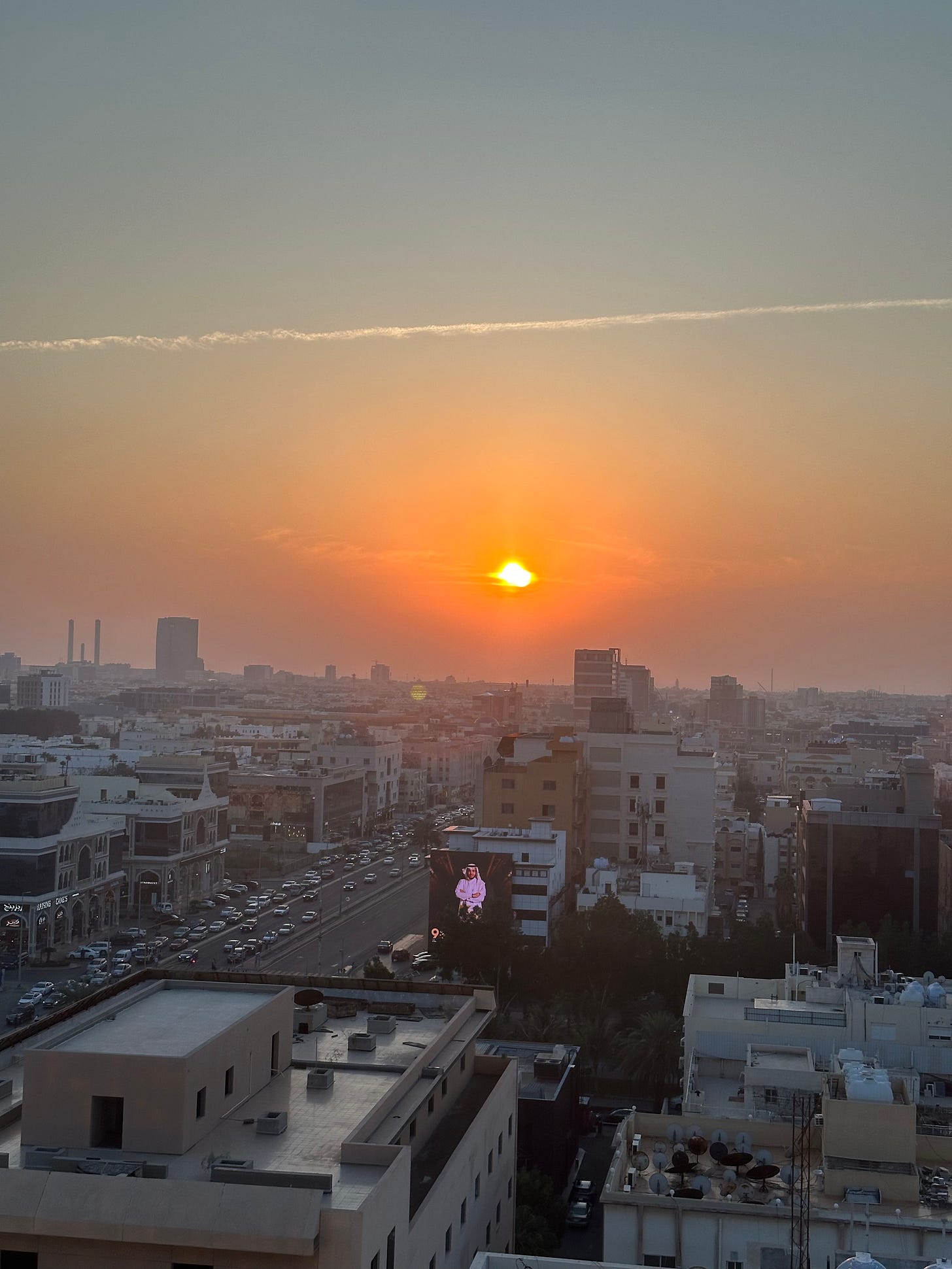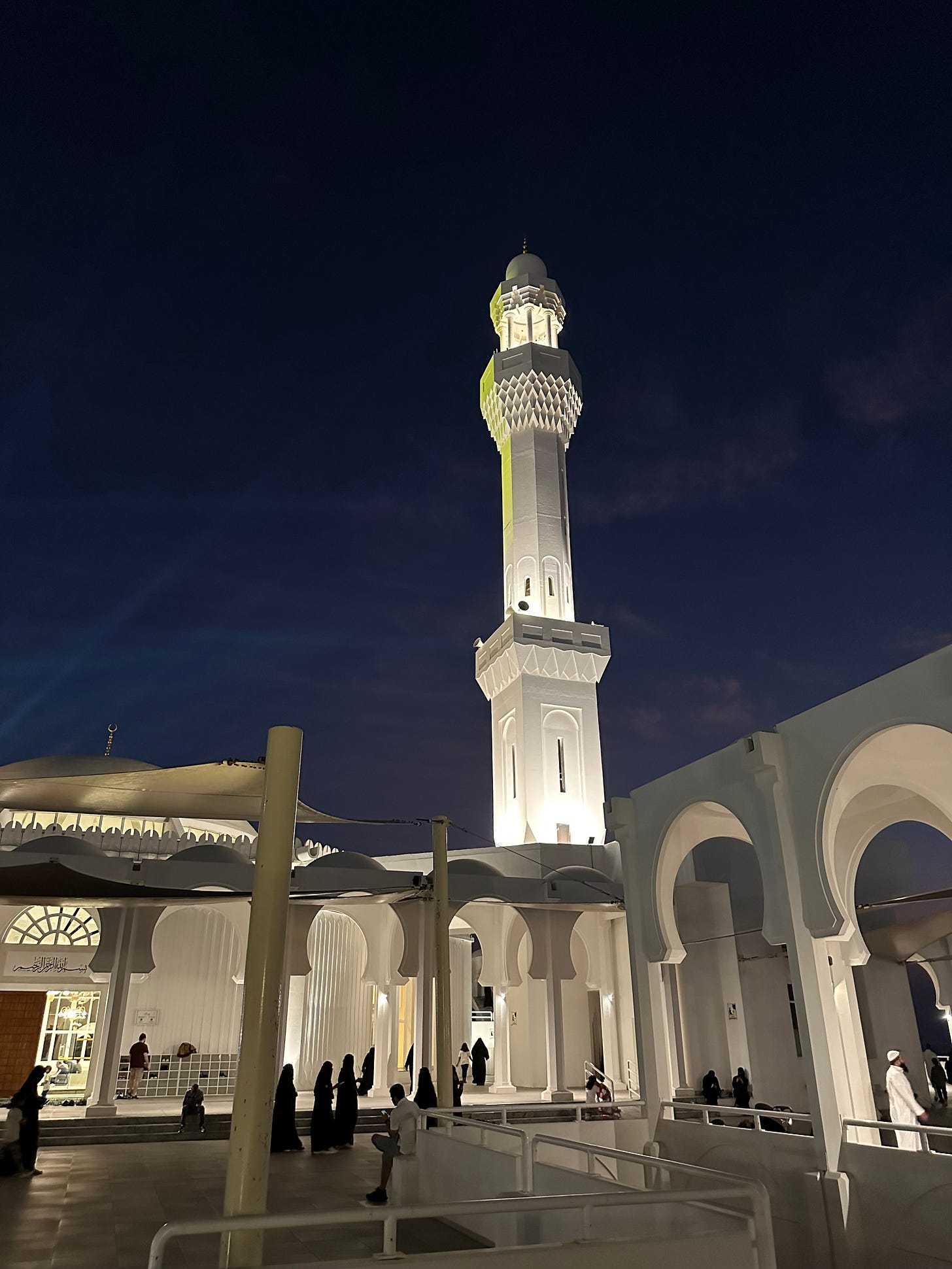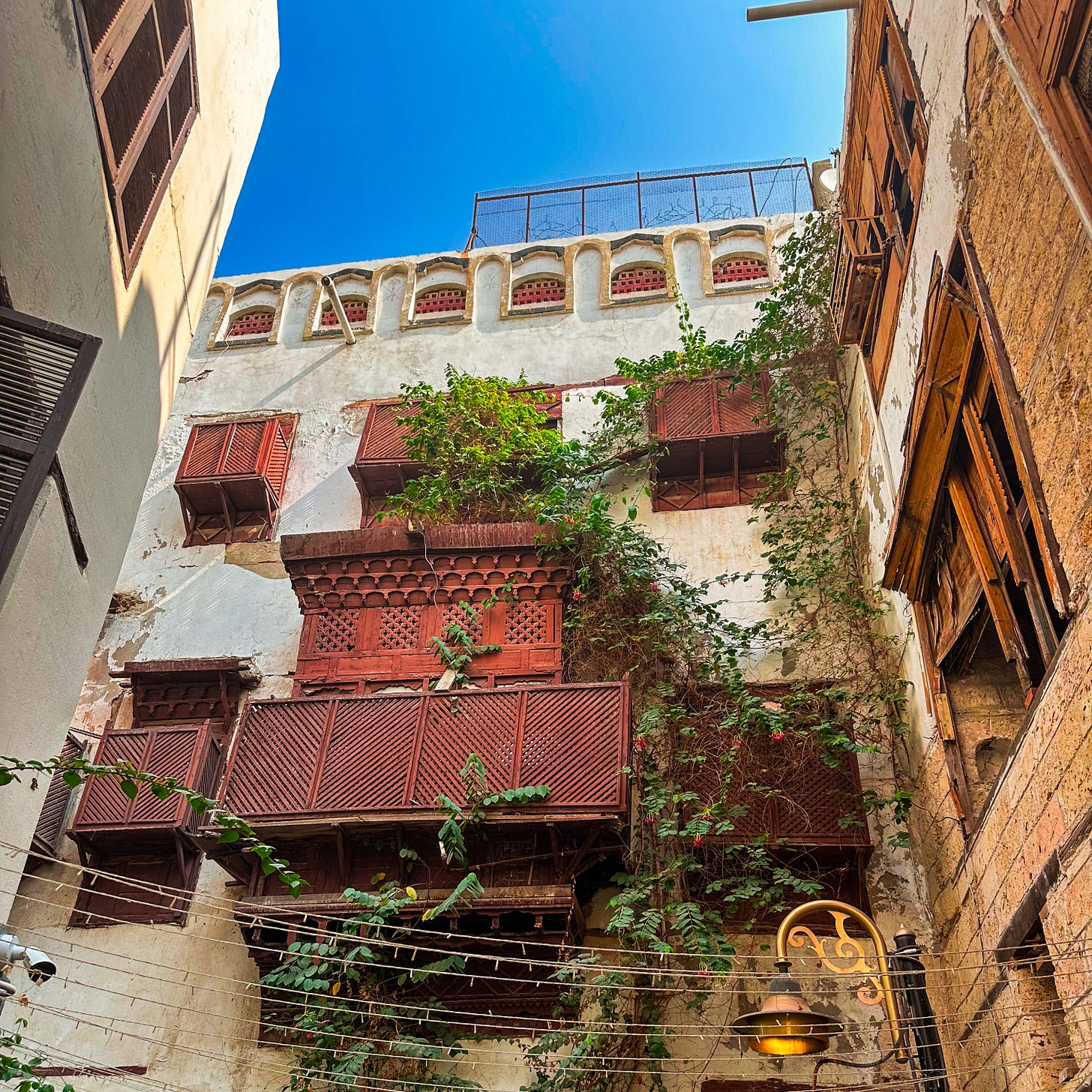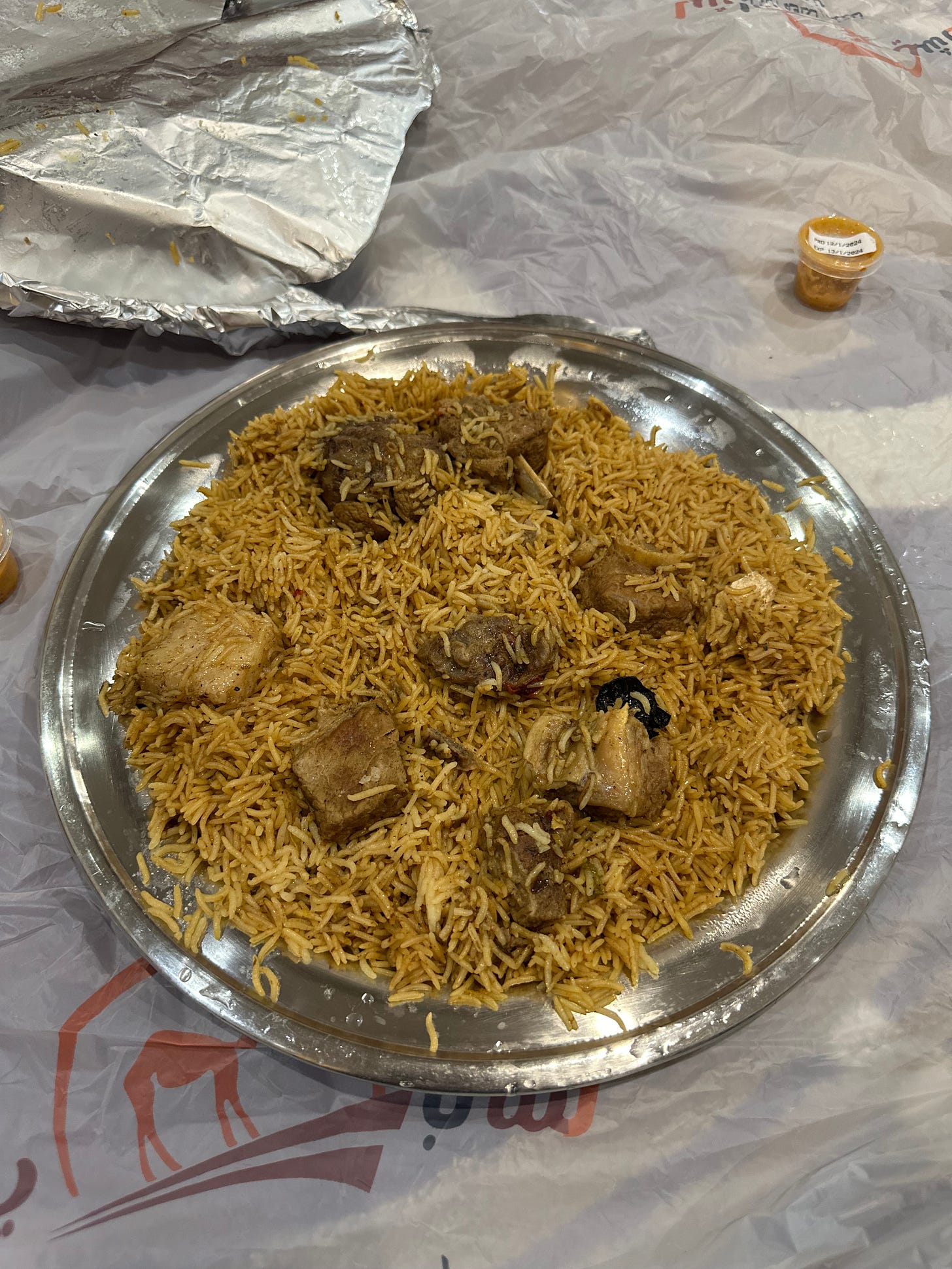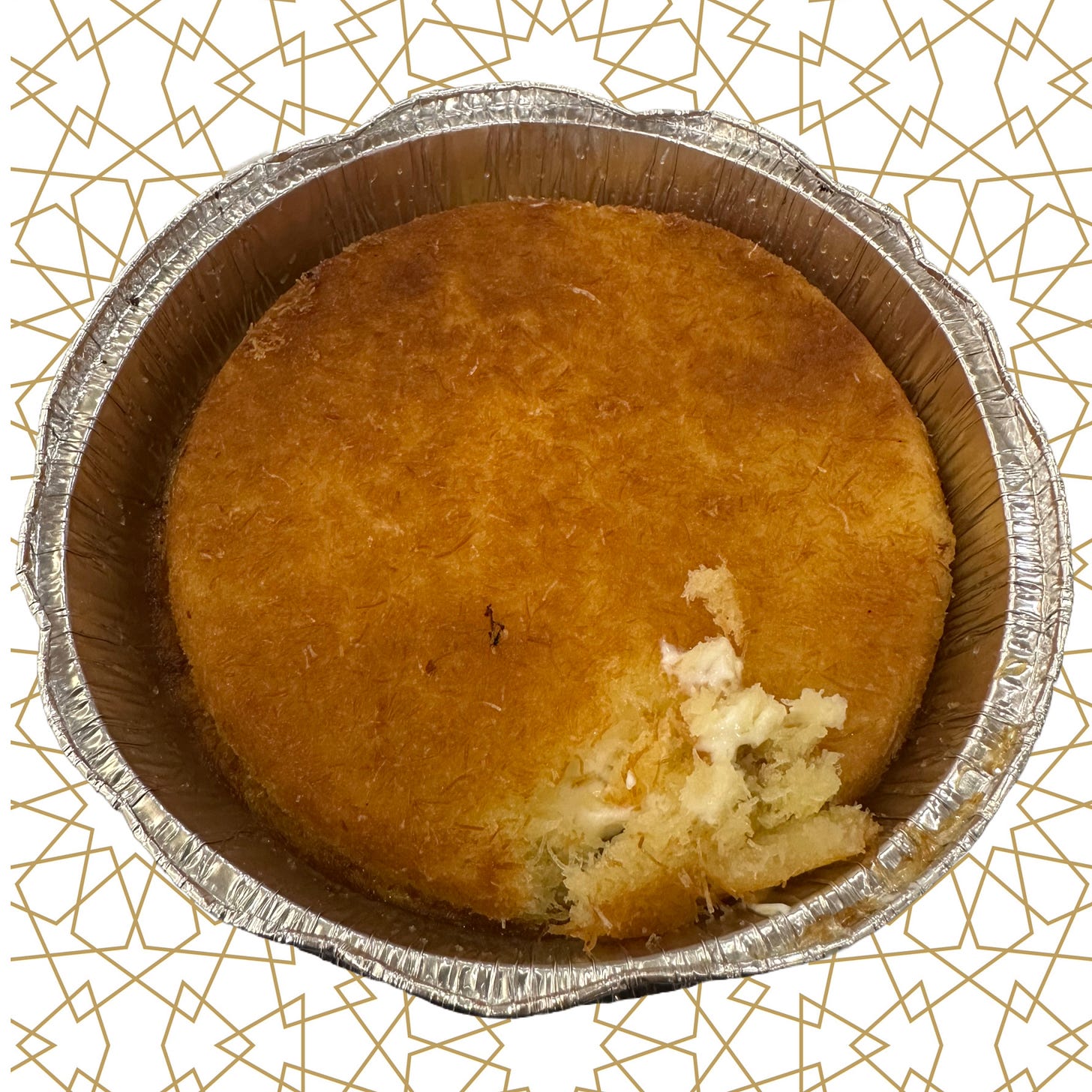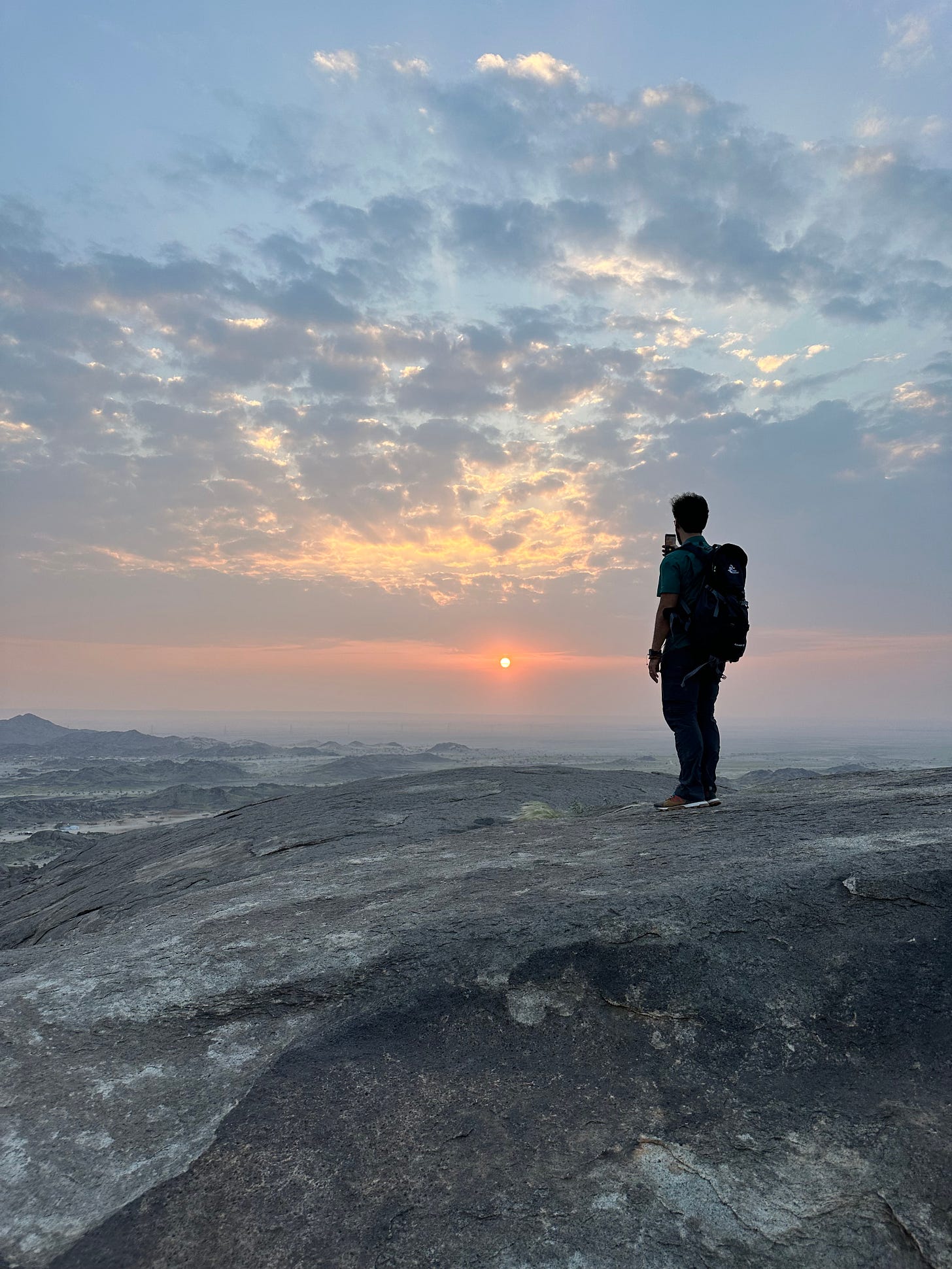Most of Jeddah feels like an industrial town, namely because of its centuries as a shipping port. Unlike some of its Gulf neighbors, the city has undergone a steady evolution. Jeddah isn’t dominated by a city skyline; instead it is a sprawl of beige, brown and pink buildings filled with Saudis and employees from friendly Muslim countries. Some of the diverse population stems from Jeddah’s position as the gateway for pilgrimages to Mecca and Medina, the Islamic holy cities.
Modernization may have developed more slowly than in other Gulf cities, but the population has grown with Saudi economic growth. Jeddah suffers from traffic jams and a derth of sidewalks. Traffic congestion has worsened because of urban sprawl, with new developments far from city centers and public services.
The Saudis are pressing Jeddah into the global community with the Vision 2030 plan. The proposal for Jeddah includes major infrastructure projects and investments in tourism, entertainment, and culture, to turn it into a worldwide center for business and recreation. There are hints of future Jeddah along the Corniche at the coastline with many luxury hotels under construction.
Thoughts? Additional questions? Please leave a comment!
The Jeddah Corniche
The Jeddah Corniche, or Jeddah Waterfront, extends for approximately 18 miles along the Red Sea. This place has gained popularity as a tourist attraction and is loved by locals for leisurely walks, particularly in the cooler evenings.
Development of the Jeddah Corniche began in the late 1970s and continued through the 1980s. Fountains, lights, and green spaces were added to the expanding waterfront area. During the 1990s, the government expanded by including restaurants and shopping areas.
During the early 2000s, the Corniche saw significant changes with the construction of the world’s tallest fountain, the King Fahd Fountain, and the Al-Rahmah Mosque, capable of holding around 2,000 worshippers. The Jeddah Corniche Circuit, which now hosts Formula One racing, has been recently added.
The Jeddah Corniche plays a vital role in Saudi Vision 2030, promoting economic diversification and enhancing tourism and recreational sectors.
I strolled along the seafront at both the far southern and northern ends of the Corniche. You can find plenty of places to sit and enjoy a coffee or snack while taking in the Red Sea, even in a place without a strong beach culture. The area comes alive in the evenings as locals come out to stroll, dine, and socialize with family and friends. It’s a location that truly captures the essence of family-oriented Saudi Arabia.
The Floating Mosque
The Al-Rahmah Mosque in Jeddah is a stunning sight at night. Built in 1985, the mosque sits on a platform over the Red Sea in the middle of the bustling Corniche ocean boardwalk. When the tide is high, it looks like it's floating on the water. That's why people often call it the Floating Mosque.
I arrived after dark, too late to catch the sunset. The Corniche was crowded with families out for an evening stroll. Kids were running around while teenagers chatted. The mosque was beautifully lit, a mix of old and new that fit right in with the flashy Yacht Club and glittering buildings nearby.
But even with all the noise and activity, the mosque felt peaceful. The sound of the waves and the smell of the sea were soothing. The architecture was striking against the night sky.
It's a great place to end a busy day in Jeddah. You can enjoy the sea breeze, the view, and the impressive building all at once. The Al-Rahmah Mosque manages to be part of the lively Corniche scene while still being a calm refuge from the hustle and bustle.
Al Balad: The Historic Town and Gate to Mecca
For centuries, Al Balad, the ancient historical district of Jeddah, has served as the entry point for pilgrims heading to Mecca. Al Balad buildings are marked by the presence of rawasheen, ornate wooden latticework that had practical as well as aesthetic uses. The window coverings and balconies offered protection from the sweltering desert sun while enabling refreshing breezes to flow. The rawasheen displayed the affluence of Jeddah’s merchants, who brought in lavish materials such as teak and mahogany for home decoration.
Due to Jeddah’s expansion, there was not enough space left within the walls of Al Balad. As the population grew, buildings were constructed taller and with more floors, some even reaching heights of eight or nine stories. The Nassif House, now a museum, is renowned for its wide staircase that could accommodate a camel carrying water to the upper levels.
Jeddah became the official port for pilgrims traveling to Mecca in the 7th century, increasing Al Balad’s importance. This decision turned the district into a cultural melting pot with influences from Africa, Asia, and other regions.
Through Al Balad’s narrow alleys, I wandered past old mosques and the last vestiges of the ancient city walls. The area is humming with coffee shops and traditional markets selling dates, clothes, housewares, jewelry, and more.
The preservation and restoration of Al Balad’s historic buildings has been ongoing for several years. In 2014, UNESCO recognized the cultural and historical significance of the area by designating it a World Heritage site. The objective of the restoration process is to preserve the district’s authentic charm, boost the local economy, and attract tourists.
Hashi Kabsa
Saudi Arabian cuisine is well-known for its beloved rice dish called Hashi Kabsa. This dish is considered a national delicacy in Saudi Arabia. When guests visit Saudi homes or during special occasions like celebrations and festivals, Hashi Kabsa is a dish of great importance.
“Hashi” refers to using young camel meat in the dish. The meat comes from camels that are 6 months to 1 year old. Young camel meat is known for its tenderness and deliciousness. The term "Kabsa" describes the process of cooking rice by steaming it in a flavorful broth. You can make kabsa with chicken or lamb if baby camel isn’t calling out to you.
To prepare Hashi Kabsa, young camel meat is slowly cooked the broth with spices such as cardamom, saffron, cinnamon, and nutmeg. The spices may differ depending on the region or family. The rice is then cooked in the same spiced broth so it absorbs all the flavors.
Often, raisins, almonds or pine nuts are added on top. This gives a sweet and crunchy contrast to the savory meat and rice.
When served, the rice is placed on an enormous platter first. Then the cooked camel meat is arranged on top of the rice. This presentation invites everyone to share the dish together from the same platter.
I dined on my hashi kabsa at Hashi Basha. My Bangladeshi Uber driver had warned me off of it, but I thought it was wonderful and had a beef texture and flavor.
Knafeh: A Popular Sweet Cheese Pastry from the Middle East
Many people adore knafeh, a traditional dessert from the Middle East. The combination of different textures and flavors in this sweet treat is a reflection of the rich cultural influences on Middle Eastern cuisine over centuries.
The precise beginnings of knafeh are uncertain, but it probably originated in medieval Arab cities such as Damascus or Nablus. Knafeh-like recipes have been around since the 10th century, making it a dessert with a history of over 1,000 years. As the Ottoman Empire reigned from the 1300s to the early 1900s, knafeh became popular throughout their vast territories, resulting in the emergence of regional variations.
Knafeh consists of crispy, baked thin pastry strands or shredded phyllo dough. These layers are made with a soft, stretchy cheese similar to Nabulsi or akawi cheese from Palestine. Once baked, the pastry is drenched in a sugary syrup infused with orange blossom or rose water.
What makes knafeh great is the contrast between its crunchy pastry, gooey cheese, and sugary syrup. Adding ground pistachios, cream, or thickened cream (ashta) enhances the flavor and texture.
Although the core ingredients remain consistent, knafeh is prepared uniquely in various Middle Eastern regions. After eating it in Saudi Arabia, I now have to experiment with it in other places to note the distinctions.
Month of Visit
January 2024
Weather
Daytime: Pleasant, in the 80s (Fahrenheit)
Evenings: Cooler, in the 70s with a gentle ocean breeze
Humidity: Moderate, with mild sweating while walking
Sun: Low intensity due to winter, minimal UV concerns
Dress Code
Men: Similar to Western attire; less traditional than in places like Qatar
Women: Predominantly conservative; abayas and niqabs or hijabs common
Note for Female Visitors: While not mandatory, conservative clothing can make travel easier
Cultural Experiences
Saudi locals are known for their kindness and hospitality, especially towards Western visitors
Interaction: Locals are helpful and engaging, creating a welcoming environment
Unique Opportunity: With few Western tourists, Jeddah offers a less commercialized experience
Language
English: Widely spoken, suitable for most interactions
Helpful Tools: Google Translate for local restaurants and rideshare drivers
Key Phrases: the standard for all countries; Learning 'thank you' and 'hello' goes very far
Transportation
Rideshares: Uber and Careem (local service) widely available; Uber cars generally nicer
Taxis: Abundant but less convenient due to fare negotiation and cash payment
Note: Limited public transportation options
Safety
General: No significant concerns over crime
Pedestrian Safety: Caution advised, as Jeddah is not pedestrian-friendly with heavy traffic
Cuisine Recommendations
Avoiding Fast Food: Many American fast food options available, but local Arab restaurants offer a more authentic experience
Local Restaurants: Al Saddah (lamb mandi)
Must-Try Dishes: Mandi (meat and rice cooked in a tandoor)





